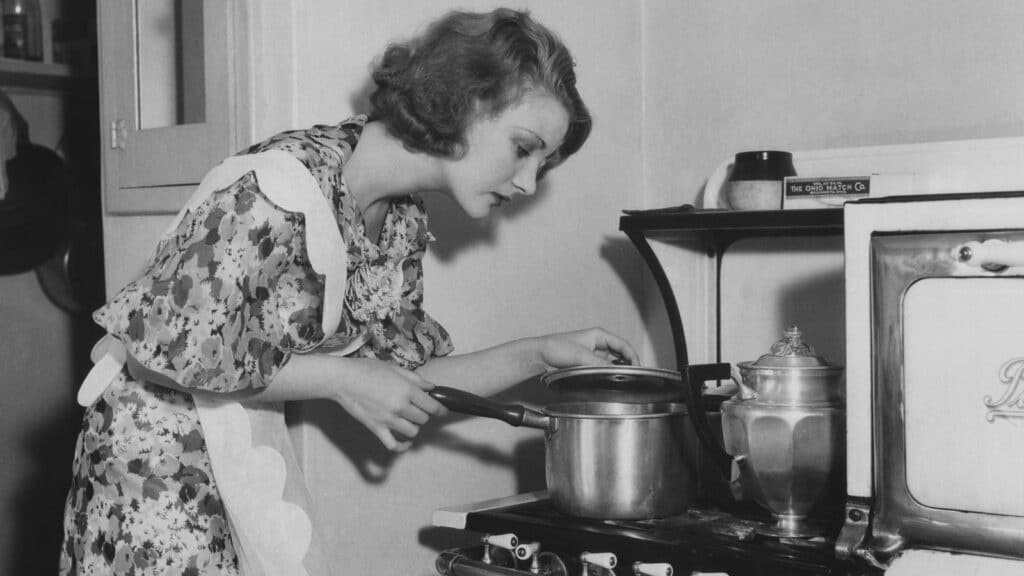During the tough times of the Great Depression, Americans got creative with their cooking, making unique dishes on a tight budget. They came up with all sorts of interesting meals like prune pudding, vinegar pie, and dandelion salad. These dishes, born out of struggle, show how clever people were back then. Check out the list below to see some of these unusual foods that tell an important story from history!
Kraft Mac And Cheese
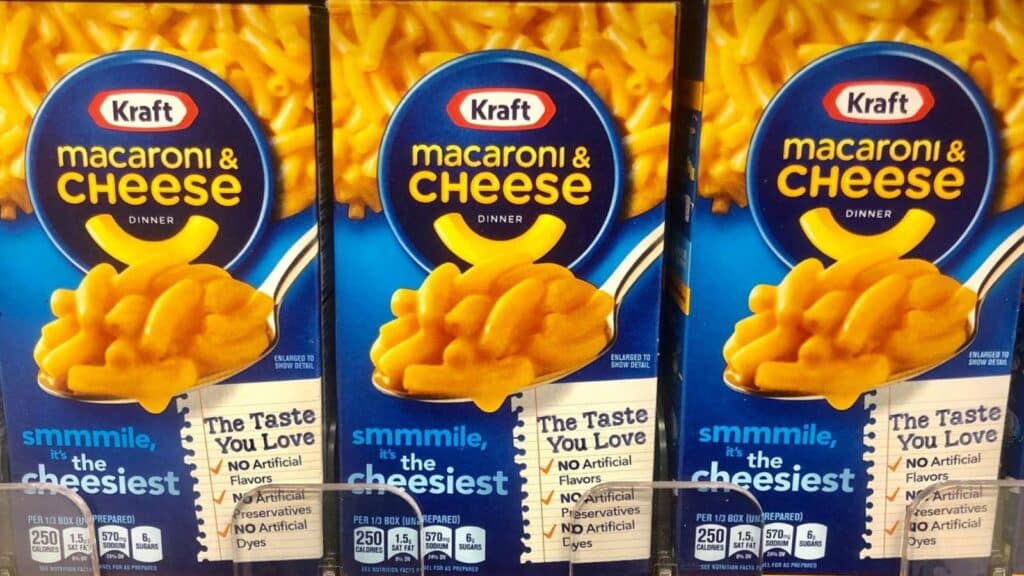
The origins of this beloved boxed pasta can be traced back to 1937 when a representative from the Tenderoni macaroni company introduced the concept of combining noodles with packets of Kraft grated cheese. This innovative idea quickly gained traction, with customers eagerly purchasing boxes for a mere 19 cents each. Each box contained dried macaroni and processed cheese powder, allowing buyers to effortlessly prepare an affordable macaroni and cheese meal by simply adding milk and butter. Over time, Kraft Macaroni & Cheese became a staple in households across North America and beyond, solidifying its status as a cherished comfort food classic. According to Statista, in 2020, a staggering 8.95 million Americans consumed five packages or more of Kraft Mac and Cheese.
Vinegar “Desperation” Pie

Vinegar pie, also called a “desperation pie,” was a clever and cheap dessert choice. When fresh ingredients were scarce and expensive, home cooks used basic pantry items like vinegar, sugar, and spices to make a quick, tangy custard filling. Vinegar was a cheap option, giving the needed tartness to the pie and using a common kitchen item. This pie showed how people could be resourceful and resilient by changing their cooking to deal with tough times.
Creamed Chipped Beef On Toast
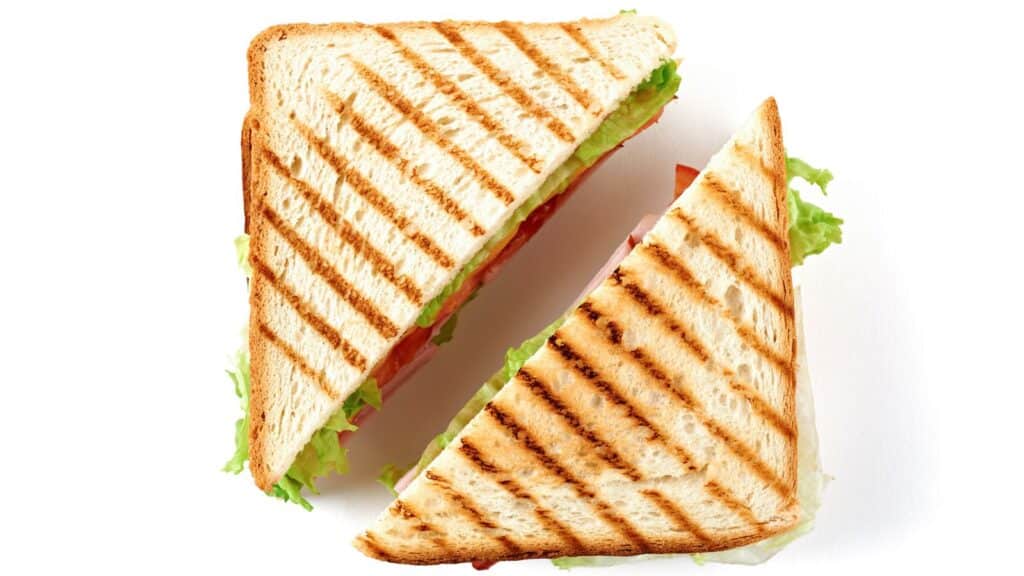
Creamed Chipped Beef on Toast featured dried and salted beef, thinly sliced and cooked in a creamy white sauce, then poured over toast. It offered not just an economical option but also a substantial and satisfying meal for families navigating financial difficulties. This dish highlighted the knack for crafting tasty and fulfilling meals using simple, easily accessible ingredients during periods of economic strain.
Dandelion Salad
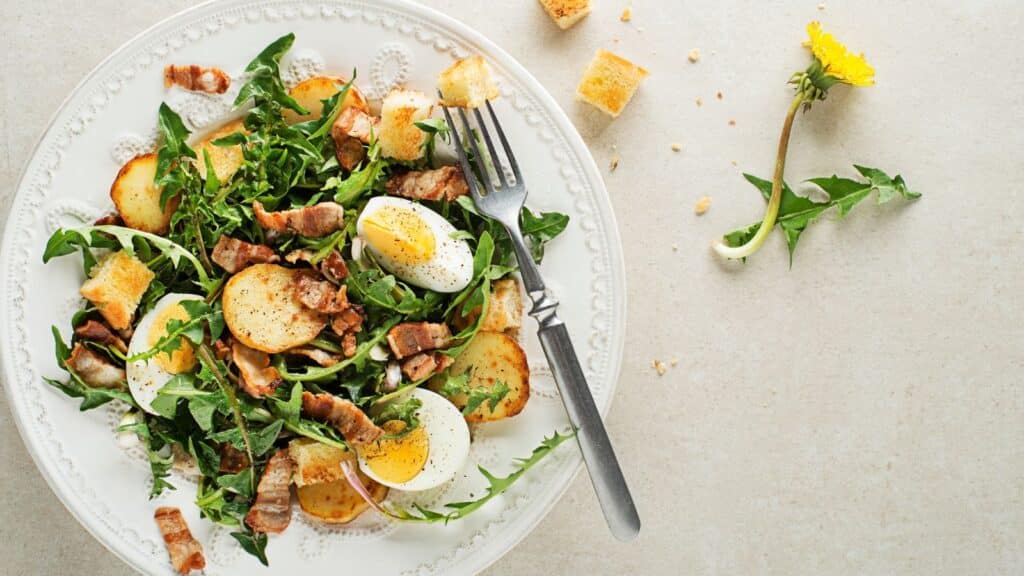
During the hardships of the Great Depression, dandelion salad emerged as a clever and economical means of incorporating greens into meals. With traditional salad fixings scarce, folks turned to gathering abundant and cost-free dandelion greens. These slightly bitter leaves were often paired with simple vinaigrette dressings or whatever was available, creating a nourishing and low-cost salad option during tough times. The widespread use of dandelion greens showed people’s resourcefulness in making the most out of nature’s bounty during periods of adversity.
Prune Pudding
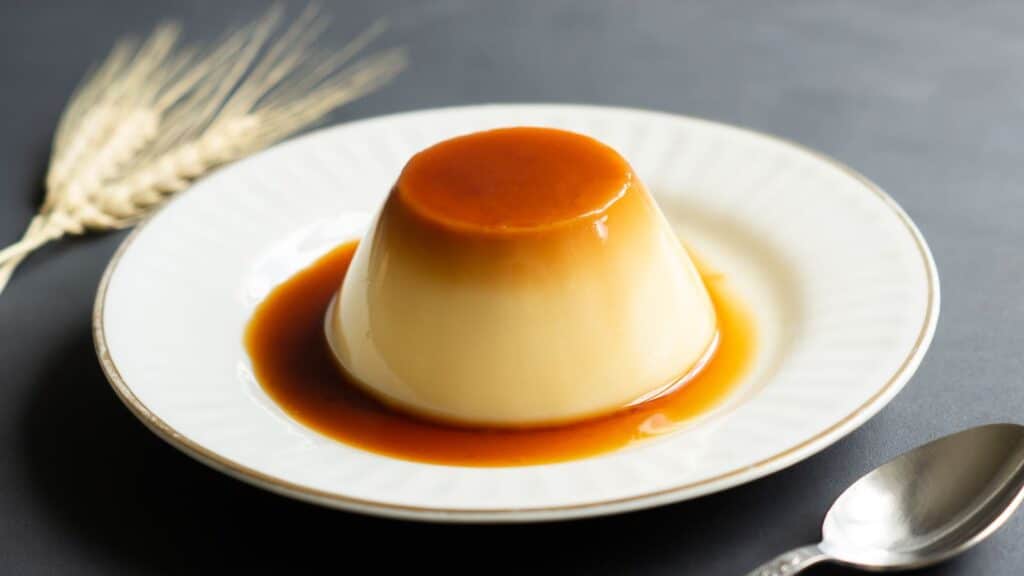
During the Great Depression, Prune pudding gained popularity as a dessert, highlighting people’s ingenuity in crafting tasty treats with basic and inexpensive ingredients. This sweet dish usually entailed simmering prunes until tender, then mixing them with staples like sugar, flour, and spices to produce a comforting pudding. In a bid to endorse economical and prudent eating habits, Eleanor Roosevelt herself served prune pudding at formal events held at the White House.
Loaves
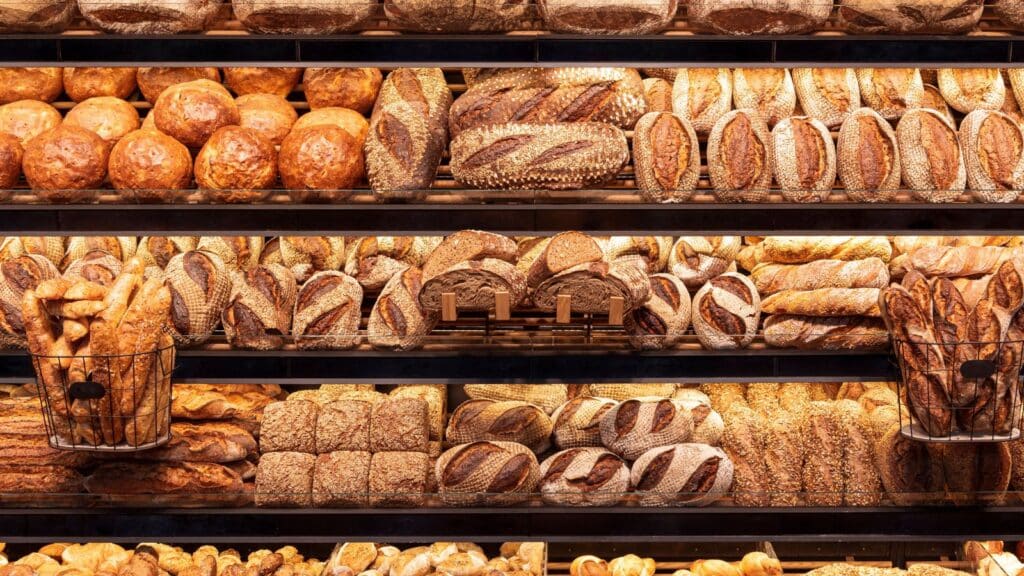
Families with many mouths to feed turned to “loaves” for substantial meals. These versatile dishes, like liver loaf, peanut loaf, meatloaf, and lima bean loaf, kept hunger at bay. Some said lima bean loaf tasted like falafel. To make them last, people served these loaves with bread, crackers, oats, cereals, and powdered sauce mixes.
Peanut Butter-Stuffed Onions
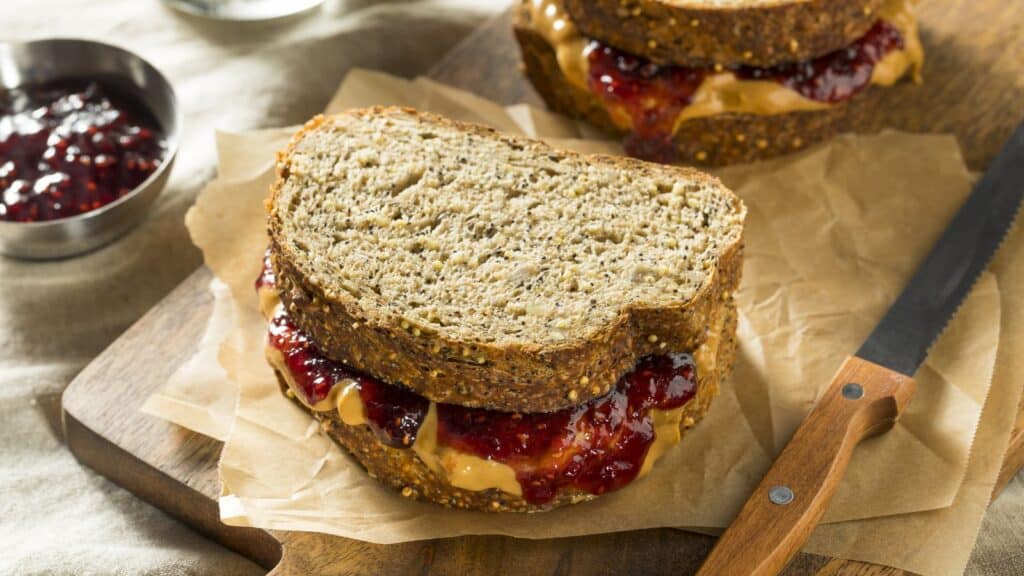
A rather curious and slightly unusual recipe that surfaced from the Bureau of Home Economics was peanut butter-stuffed onions, heavily advertised at the time. The preparation was straightforward: bake an onion, remove the center, and stuff it with peanut butter.
Fortified Cereal

According to the FDR Presidential Library and Museum, during the height of the Depression in 1933, a staggering 24.9% of the nation’s total workforce, equating to 12,830,000 individuals, found themselves without employment. For those fortunate enough to retain their jobs, wage income plummeted by 42.5% between 1929 and 1933. This era marked the most severe economic disaster in American history. The plummeting prices of agricultural goods resulted in many farmers losing their homes and land, leaving them struggling to feed themselves. In response to such dire circumstances, Milkorno emerged as a pragmatic and ingenious meal option. Milkorno provided a straightforward yet crucial mix of nutrients using milk and cornmeal.
Amish Cold Soup
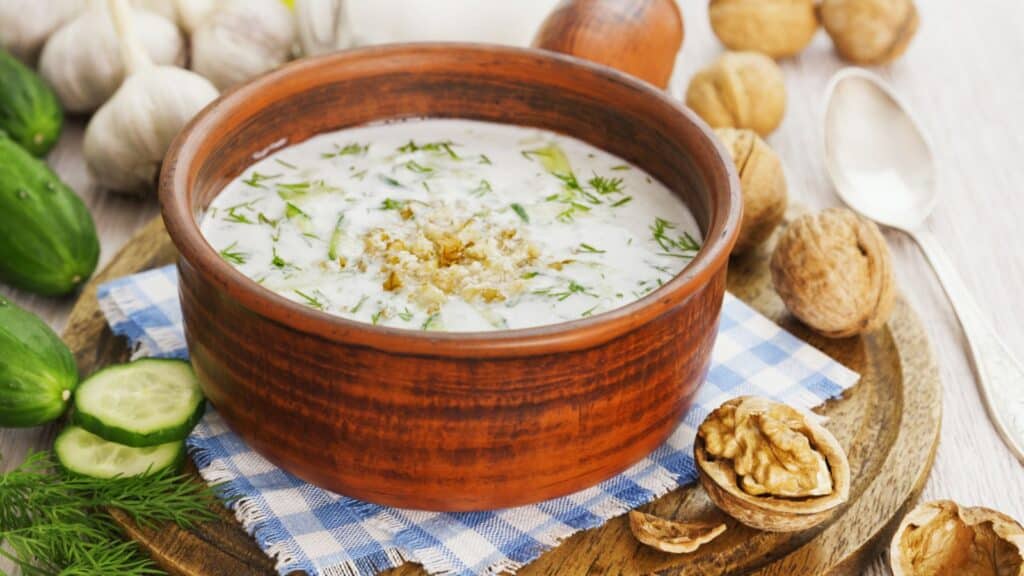
A staple in Amish kitchens since the Great Depression, cold milk soup endures as a straightforward and budget-friendly option. Created by mixing milk with bananas and sugar, some compare its taste to cereal without the cereal itself. This dish rose to prominence during the Great Depression for its affordability, with milk being readily accessible. It inspired people to create unique recipes centered on the abundance of milk during that era.
Peanut Butter and Pickle Sandwich
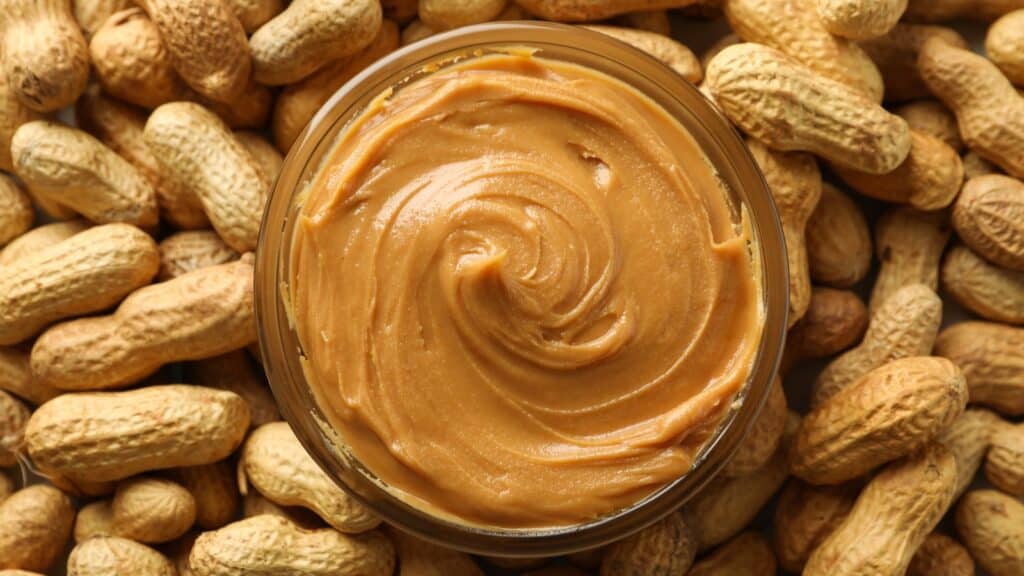
The classic Peanut butter and jelly sandwich remained a popular pick during these times. Yet, numerous distinct twists on the American classic surfaced, like tossing in banana slices or pickles. These variations offered a blend of protein from the peanut butter, along with the natural sweetness of bananas or the salty kick and crunch of pickles. These options were budget-friendly and easily obtainable, ensuring they were within reach for most households. Still part of the American diet, according to Statista, 299.34 million Americans consumed peanut butter in 2020.
Bologna Casserole
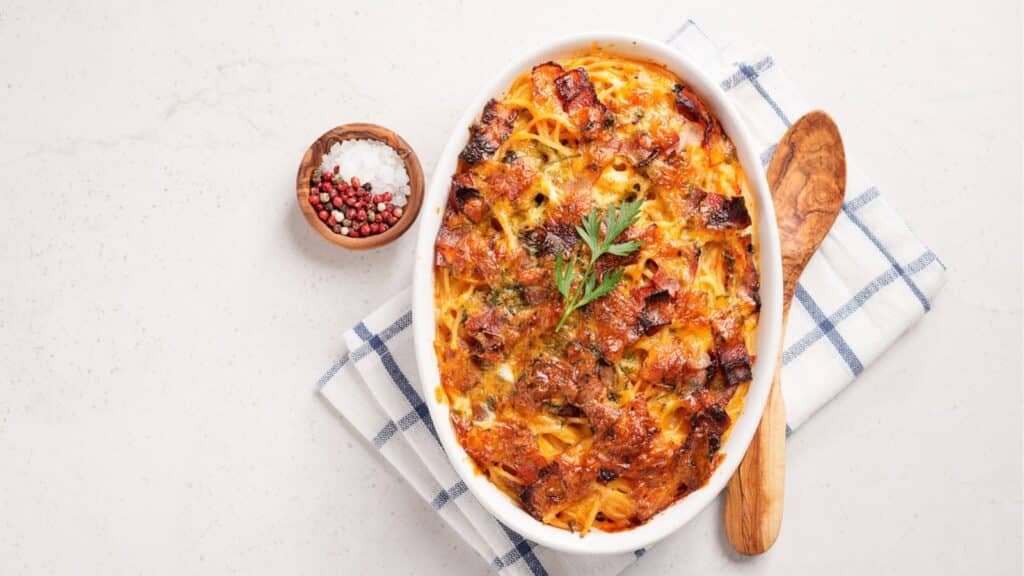
Bologna, abundant during the Great Depression, was frequently transformed into a casserole. A bologna casserole commonly comprises sliced bologna, pasta, cheese, canned chili, onions, garlic, bacon, and canned pork baked together in a casserole dish.
Mulligan “Community” Stew
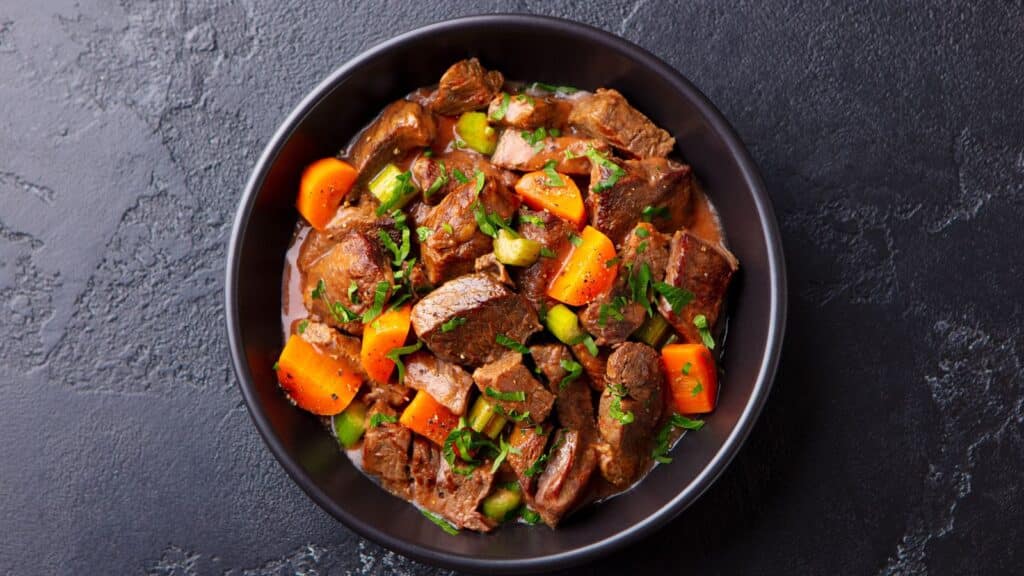
Mulligan Stew, also known as “Community Stew,” originated as a collaborative cooking venture within gatherings, often in outdoor or shared settings. It’s a stew created by combining diverse ingredients contributed by different participants. Common elements include meats, vegetables, and whatever else is on hand. The term “Mulligan” suggests a mix or a random fusion of ingredients. This stew embodies the spirit of community and creativity, demonstrating how people come together to share resources and prepare a wholesome meal.
No Pizza Toppings
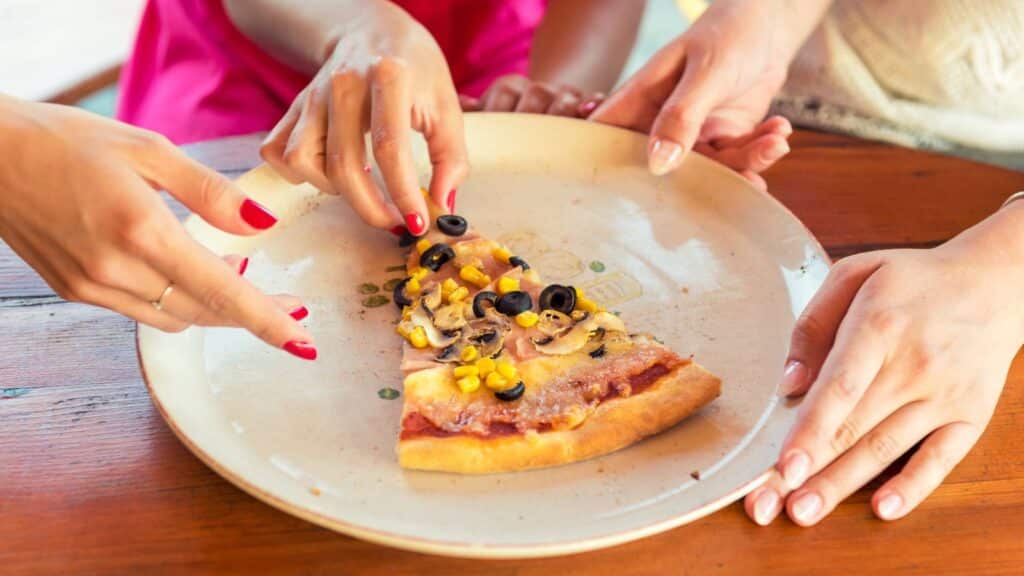
Plain pizza dough, without any toppings, emerged as a staple for numerous households facing hardships during the Great Depression. With scarce resources and a pressing need for sustenance, families frequently turned to homemade pizza dough as a hearty and economical meal base. The simple dough served as a practical, cost-effective solution to combat hunger during those trying times. However, most Americans would be incredibly sad these days without toppings on their pizza.
Hoover Stew
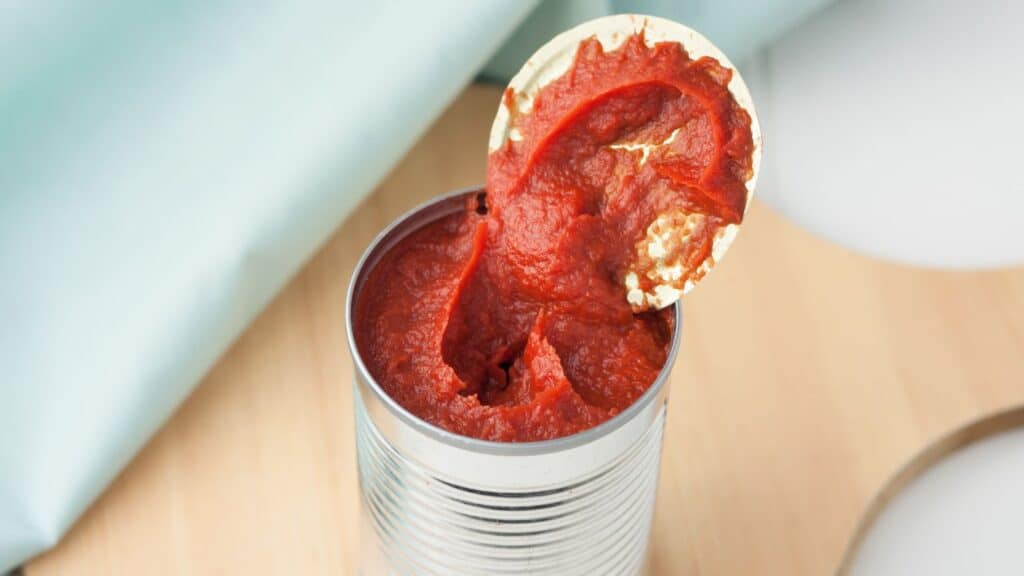
The name “Hoover Stew” pays homage to the challenging economic times during President Herbert Hoover’s presidency. Often cooked up in makeshift communities known as “Hoovervilles,” this meal brought together budget ingredients like macaroni, ground beef, and canned tomatoes. It serves as a reminder of the importance of frugality and resourcefulness during the trying times of the Great Depression.
The “Poor Man’s Meal”
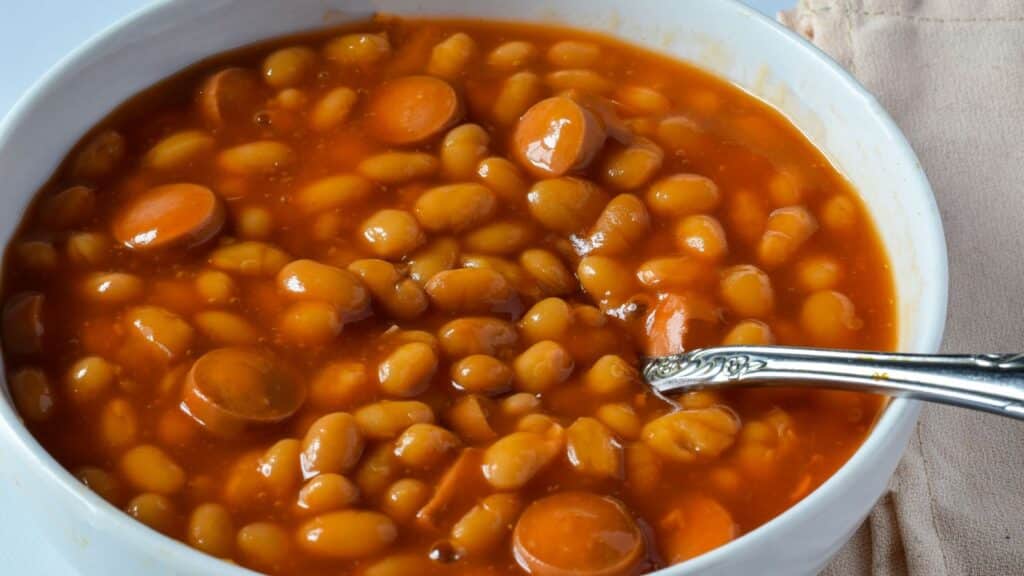
A common “poor man’s meal” throughout the Great Depression consisted of the simple ingredients of beans and cornbread. This straightforward and budget-friendly dish offered a hearty supply of protein and carbohydrates. Often created in large amounts, this meal could sustain a family for a good length of time.
Ketchup Soup
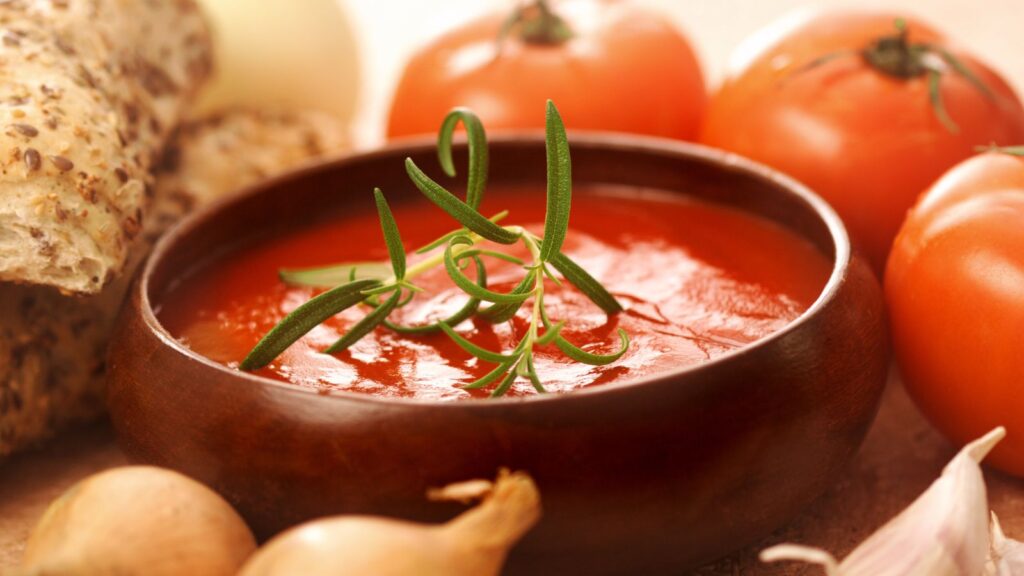
Ketchup soup was an uncomplicated dish made by mixing water and ketchup to form a basic broth. It was a go-to option for many families, who would easily stir ketchup packets into hot water to whip up this speedy meal. It was not the best or tastiest meal, but it provided some families a daily meal during the Great Depression.
Navy Bean Soup
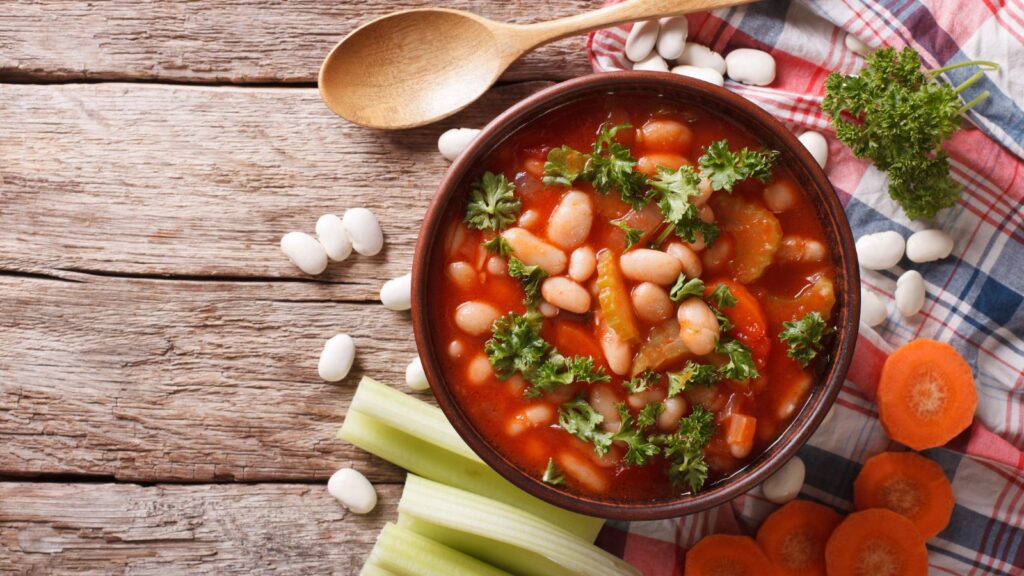
Navy bean soup, crafted from navy beans, vegetables, and occasionally ham or bacon for added flavor, offered a robust and nourishing option for budget-conscious families. The straightforwardness of the ingredients and the capacity to stretch a minimal amount of meat into a sizable pot of soup rendered it a pragmatic and favored selection.
Garbage Plates
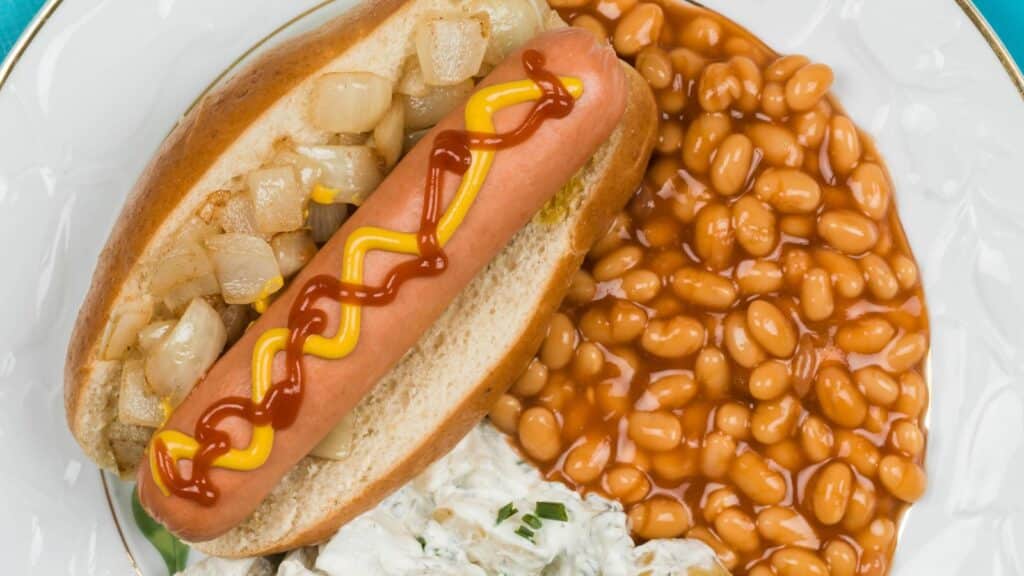
The idea behind a “garbage plate” meal usually involves a medley of familiar comfort foods, such as hot dogs, hamburgers, or assorted meats, arranged atop a generous serving of home fries and macaroni salad. This hearty ensemble is often garnished with condiments like mustard, onions, and a signature sauce, adding layers of flavor and texture to the dish.
Rabbit Stew
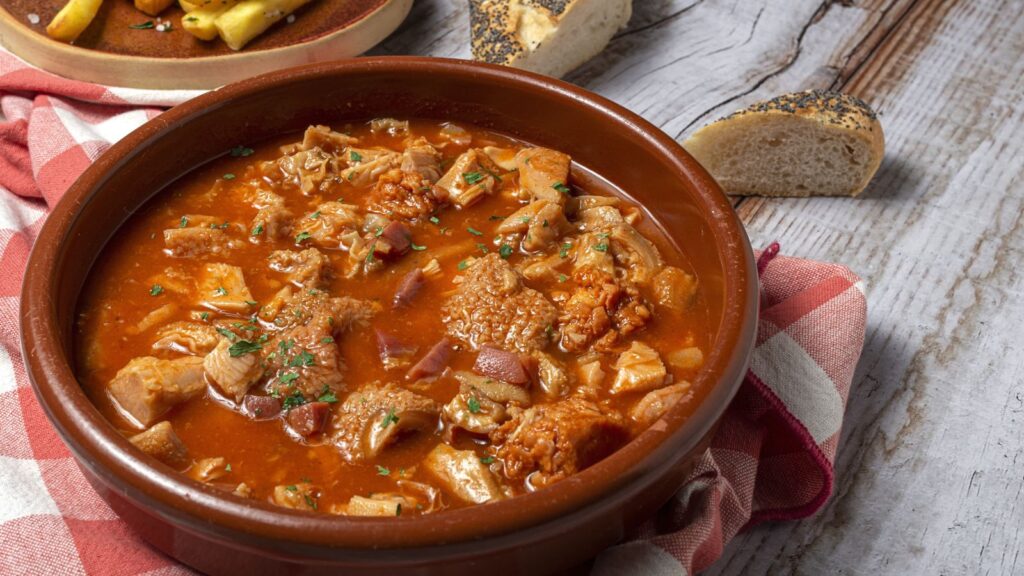
Rabbit stew emerged as a simple and convenient meal choice. Utilizing easily obtainable and budget-friendly ingredients, including the abundance of rabbits, with rabbit meat served as a viable protein option. The stew typically incorporated vegetables and basic seasonings, resulting in a filling and wholesome dish.
25 Hardest Parts About Getting Older That No One Ever Talks About

25 Hardest Parts About Getting Older That No One Ever Talks About
Deprived Desires: 25 Things Boomers Had That Modern Americans Can Only Long For

Deprived Desires: 25 Things Boomers Had That Modern Americans Can Only Long For
25 Reasons People Are Leaving California Permanently


